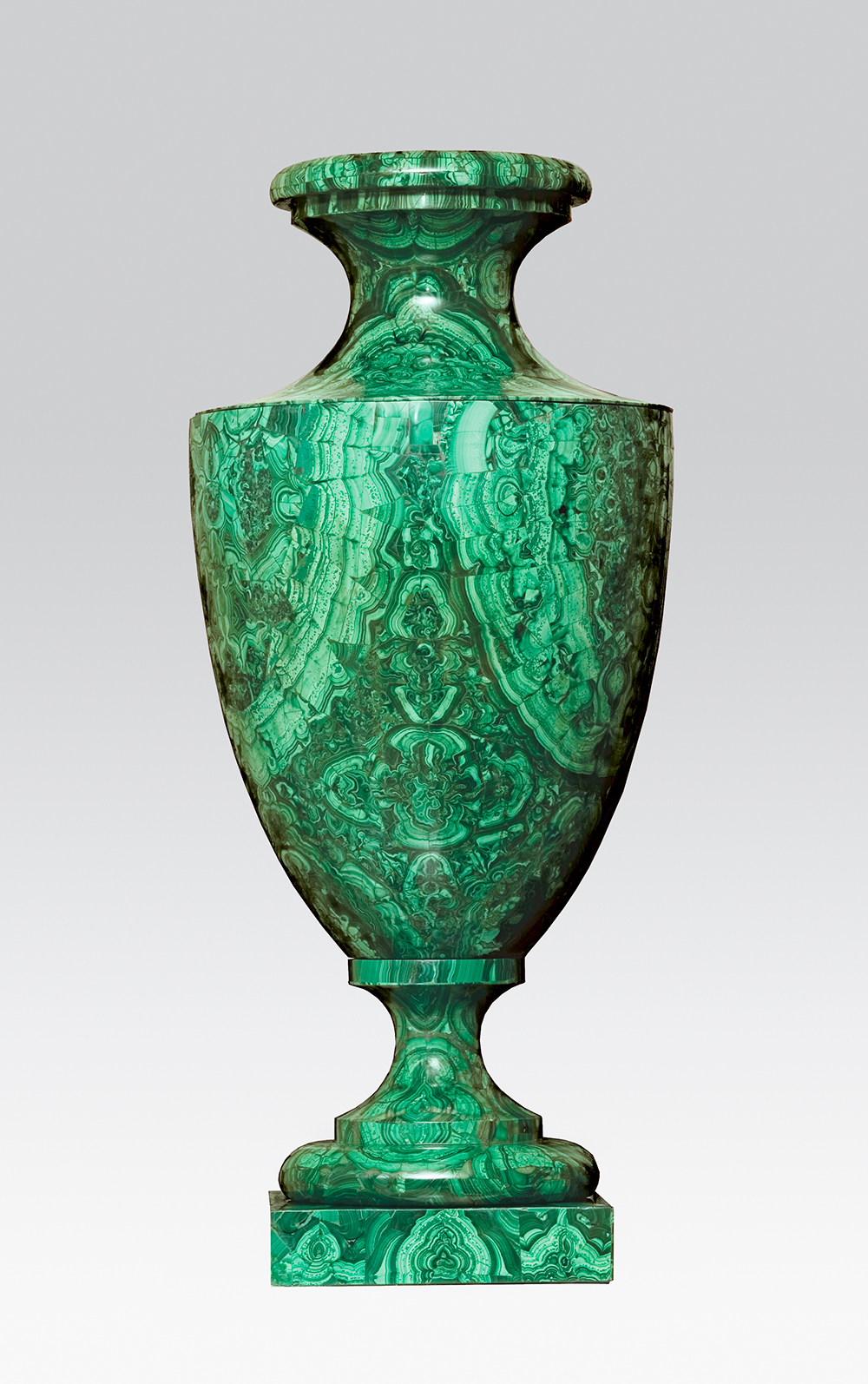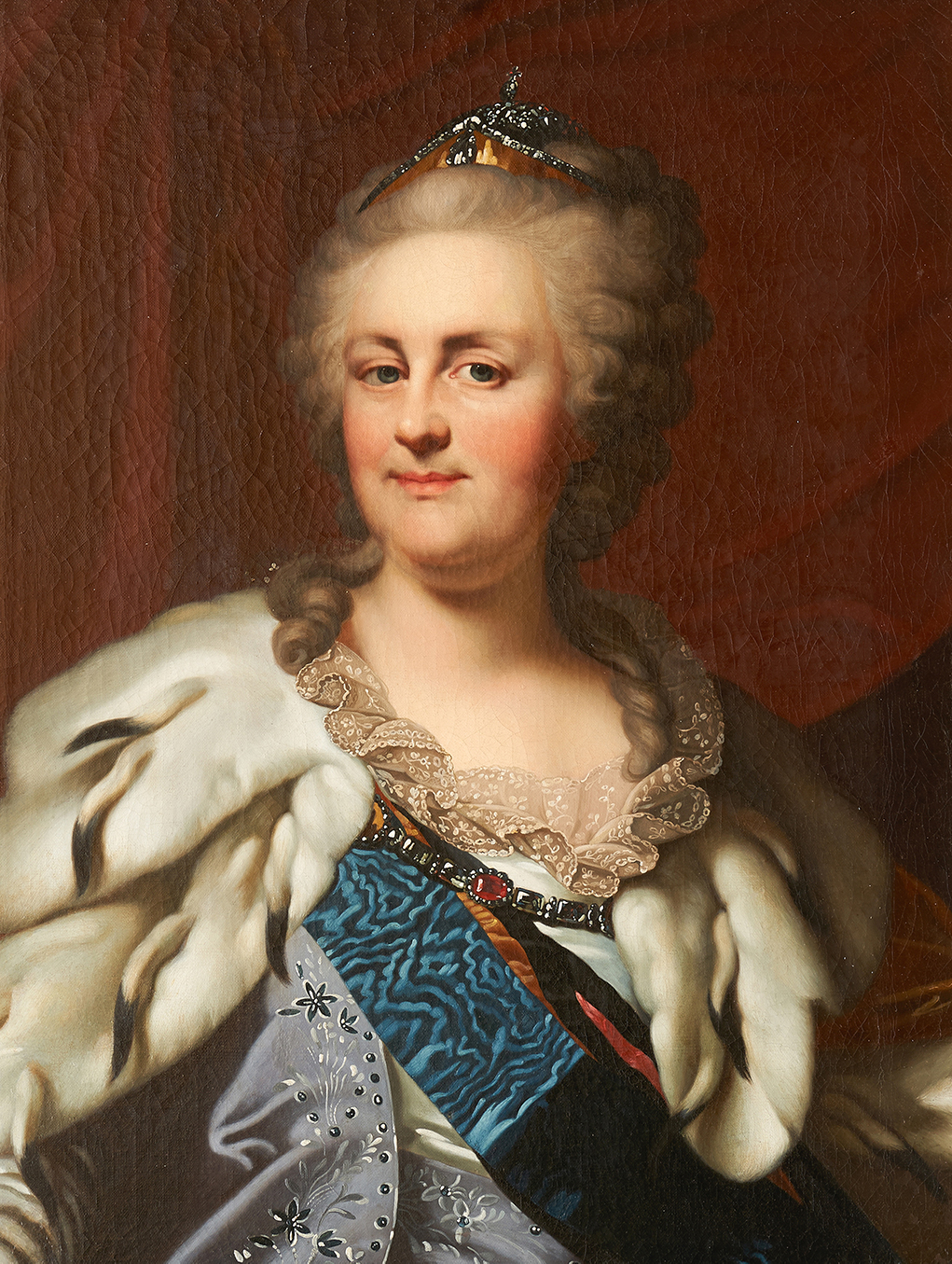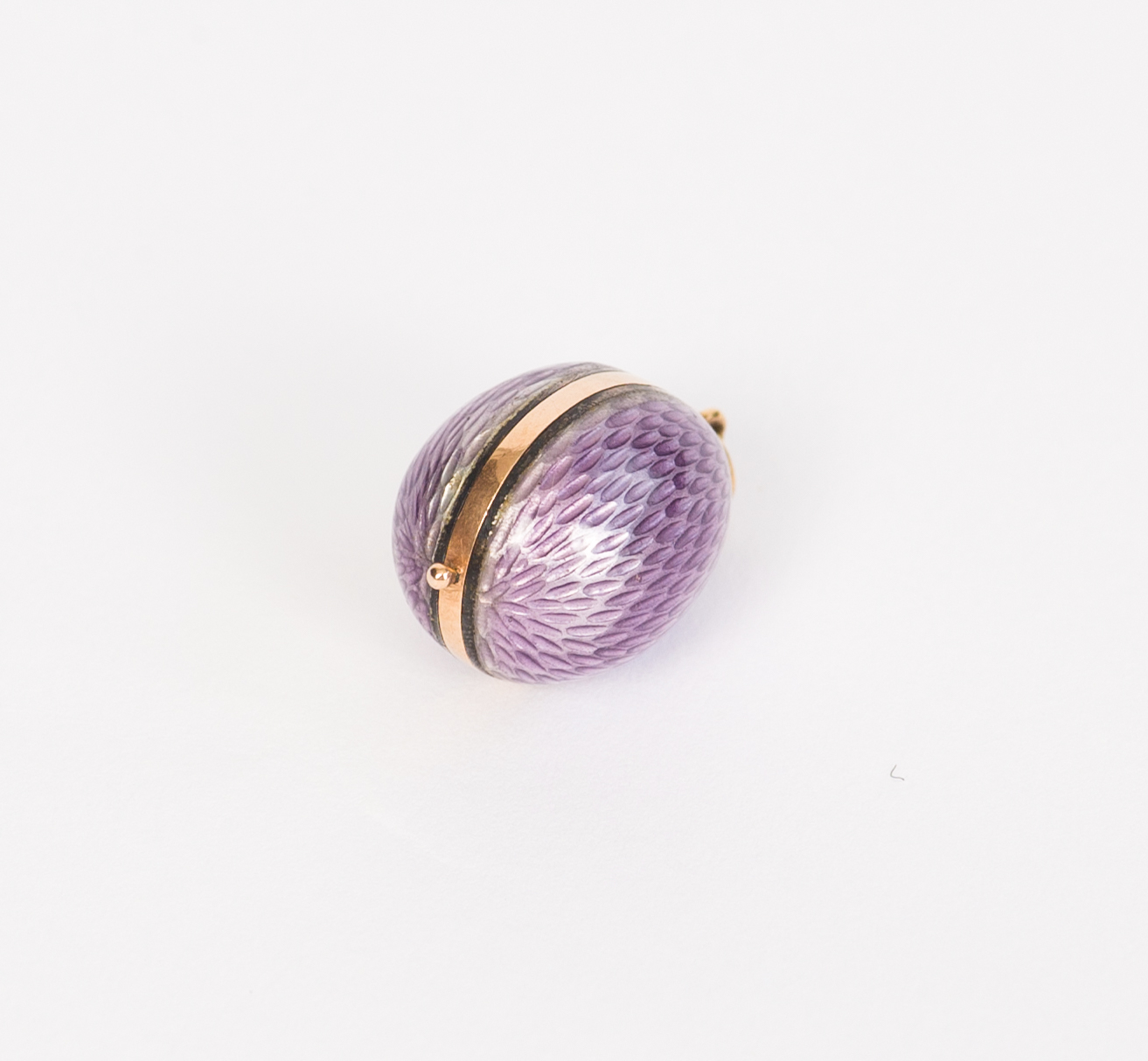If you are really interested in the fact that the royal rubbish at Buckingham Palace has increased by 23 per cent from last year, or that Meghan and Kate wore the same coloured frock to a function, then you are a royal tragic. But if you are prepared to spend tens of thousands to buy something that once belonged to a member of the nobility then you are in another postcode to those who riff off rumours in New Idea Royal Monthly.
David Roche set a significant part of his
collecting coordinates on items that had once graced royal fingers, necks,
heads, shoulders, backsides, boudoirs, dining rooms and palaces. Previous Roche
Museum exhibitions have showcased the diversity and strengths of Roche’s
interests, which spanned the 18th and 19th centuries and included European
furniture, ceramics, metal ware, clocks and paintings. In Triumph and
Tragedy, the focus shifts to his interest in Russian works of art.
 Malachite vase and cover, Russia, c.1890, malachite
Malachite vase and cover, Russia, c.1890, malachite
This is the first time that all of Roche’s Russian items have been
the focus of an exhibition and an extensively researched and illustrated
catalogue. The exhibition has been enhanced by borrowings within Australia from
public and private collections of other Russian works of art that either
strengthen the holdings in Roche’s collection – porcelain, imperial links or
Fabergé – or because they illuminate areas that David did not collect,
including maps, books, coins, photographs and avant-garde art of the early 20th
century. With over 90 items from the David Roche Collection and extensive
loans, this exhibition is the most significant record of locally owned Russian
art from the period of Catherine II to Nicholas II to be staged in this
country.
Anyone who has been fortunate enough to visit
the major museums in St Petersburg and Moscow, or get a sense of the vastness
and richness of their holdings through documentaries, will likely feel
overwhelmed by the sheer weight of cultural product – interiors encrusted with
every manner of decorative opulence and symbols of power. Triumph and
Tragedy offers accessible, mouth-sized morsels to nibble on in a compact
but multi-faceted display. Any single item, be it a porcelain plate, a chair,
portrait or map, can instantly become a rabbit hole down through which can be
found an extraordinary place peopled by exotic creatures, whose lifestyles,
power and privilege stagger the imagination. No surprises here for students of
20th century revolutionary politics, just confirmation of the great divide that
existed in Russia for centuries between a small, extremely powerful and wealthy
elite and the peasantry (around 80 per cent of Russia’s population). It begs
the question, what took the revolution so long?
 Catherine II
Catherine II
Contemporary audiences perform a balancing act.
On the one hand, appreciating the artistry of cultural production and honouring
the skills of the sometimes anonymous artisans who fashioned the Fabergé eggs,
the intricate ormolu insets, and so on. And on the other, feeling distaste –
even repugnance – for a political and social system built on such levels of
privilege and repression. Perhaps a close reading of curator Nathan Schroeder’s
catalogue essay on the Romanovs will go some way to informing an understanding
of the conflicted and complex nature of social and political reform in Russia,
particularly in the 19th century, when members of the nobility and Alexander II
(who reigned from 1855 to 1881) achieved significant social and political
reforms.
Roche’s interest in Russian art can be traced to his visits to
Russia during the 1990s. His obsession with royalty, notably the British French
Regent (later George IV) and the French Bourbons and Napoleon, extended to the
life and times of Catherine II and the Romanovs. Roche and late Roche Museum
director Martyn Cook, with the assistance of dealers Carlton Hobbs and Alice
Ilich, gradually built a collection of items that reflected the imperial
family, which, as Cook said, imparts to visitors “the sheer beauty and grandeur
of Russian items”.
The exhibition is divided into three sections: Catherine the Great
(beginning with two portraits of the Empress), Princely and Imperial (dominated
by a portrait of Emperor Nicholas I and a young aristocrat Anatole Demidoff ),
Nicholas II and Fabergé.
 Faberge Pale mauve Easter Egg pendant
Faberge Pale mauve Easter Egg pendant
Many, I suspect, will be attracted by the magic of ‘Fabergé’ and,
having realised that not one of the 50 very rare ‘eggs’ is in the display,
should nevertheless be well content with a clutch of miniature eggs, fashioned
with great skill and artistry in a range of materials including gold, diamonds,
enamel, precious hard stones and silver. These items – in addition to a number
of Fabergé objects such as a bracelet, cuff links, tie pin, cigarette case and
pendant – attest to Fabergé’s adherence to very high standards of craftsmanship
and design. The bracelet, for example, is an excellent example of a turn-of-the
century fashion taste for paler stones and smaller, lighter jewellery.
The
fact that the provenance of some of these items illuminates broader social and
political contexts of their owners adds a dimension to their visual presence.
Be prepared to take time exploring this collection of decorative and functional
objects. The big-ticket items, such as the large cut glass vase on a
‘waterfall’ pedestal, should command attention, but the richness of Triumph
and Tragedy is in the detail, where the heart and skill of the artisan, on
whom all these high-born lords and ladies so depended, live on.
Until 21 December
Triumph and Tragedy: Catherine, The Romanovs & Fabergé
rochefoundation.com.au
John Neylon is an award-winning art critic and the author of several books on South Australian artists including Hans Heysen: Into The Light (2004), Aldo Iacobelli: I love painting (2006), and Robert Hannaford: Natural Eye (2007).
Get the latest from The Adelaide Review in your inbox
Get the latest from The Adelaide Review in your inbox